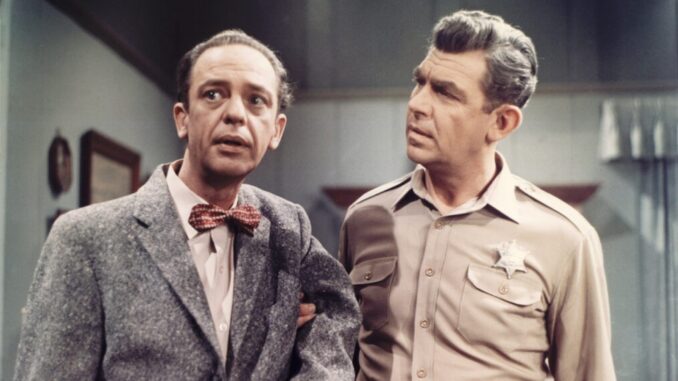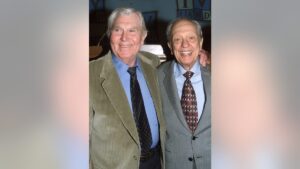
It’s been decades since The Andy Griffith Show aired its last episode, yet the charm of Mayberry hasn’t faded a bit. The series, which ran from 1960 to 1968, has become a timeless classic. But beyond the catchy whistling theme and the lovable characters, there are some surprising and little-known details about the show that make it even more fascinating. Ready to take a stroll down memory lane and uncover the untold side of this beloved series?
H1: The Origins of Mayberry Were Surprisingly Simple
H2: Andy Griffith Didn’t Plan to Star in a Long-Running TV Show
Andy Griffith initially envisioned the show as a one-season project. His background was more rooted in film and stage, and he wasn’t sure he wanted to commit to the rigorous schedule of a weekly TV series. But the instant popularity of the pilot episode changed his mind—and the course of television history.
H2: Mayberry Was Based on a Real Town in North Carolina
The fictional town of Mayberry was inspired by Griffith’s real-life hometown of Mount Airy, North Carolina. From the small-town quirks to the Southern hospitality, Mount Airy laid the blueprint for everything fans came to love about Mayberry.
H1: The Whistling Theme Song Has Its Own Story
H2: That Iconic Whistle? It Wasn’t Just Background Noise
The catchy opening theme, officially titled “The Fishin’ Hole,” was originally meant to include lyrics. Andy Griffith actually recorded a version where he sang the words. But producers opted for the now-iconic whistle version instead—simple, nostalgic, and perfect for setting the tone.
H1: Don Knotts Wasn’t Supposed to Stay
H2: Barney Fife Almost Didn’t Exist
Don Knotts was originally hired for a single guest appearance. But after audiences fell in love with the bumbling yet lovable deputy, he became a regular. In fact, Knotts’ portrayal of Barney Fife became one of the most iconic comedic performances in TV history.
H2: He Won Five Emmys for His Role
Talk about leaving a mark—Don Knotts earned five Emmy Awards for his role as Barney Fife. His comedic timing, nervous energy, and impeccable delivery elevated the show from charming to unforgettable.
H1: Ron Howard Grew Up on the Set
H2: Little Opie Was a Prodigy in the Making
Ron Howard was only six years old when he took on the role of Opie Taylor. But he handled his scenes with the confidence and professionalism of an adult. Today, Howard credits the show with teaching him valuable lessons that carried over into his acclaimed directing career.
H2: Andy Helped Ron Learn to Write
Ron Howard revealed that Griffith helped him develop storytelling skills, often encouraging him to analyze scripts and understand character motivations. It was like going to film school—before he could even drive.
H1: Aunt Bee Was Nothing Like Her Character in Real Life
H2: Frances Bavier Had a Complicated Relationship With the Cast
Despite playing the sweet and nurturing Aunt Bee, Frances Bavier was reportedly difficult to work with. She didn’t mesh well with some cast members, especially Andy Griffith himself. However, before her death, she reached out to Griffith to apologize for any past tension.
H2: She Lived a Quiet Life After the Show
After the series ended, Bavier retired to a small town in North Carolina. Much like Aunt Bee, she lived a modest life—but she became somewhat of a recluse in her final years.

H1: The Show Was Filmed in California, Not North Carolina
H2: The Mayberry Set Was a Hollywood Illusion
Even though the series was steeped in Southern charm, the town of Mayberry was actually a backlot in Culver City, California. The same set was later used for shows like Star Trek and Batman.
H2: The “Mayberry” Church Was Used in Other TV Shows
You might recognize the Mayberry church from episodes of The Waltons or The Dukes of Hazzard. Hollywood loves to recycle its best locations!
H1: Andy Griffith Kept the Show Grounded
H2: He Made a Conscious Choice to Play the “Straight Man”
Rather than being the comedic lead, Andy Griffith often let other characters shine. This allowed Don Knotts and the rest of the cast to bring out the humor, while Andy played the calm and wise sheriff who kept everything together.
H2: He Had Creative Control Over the Scripts
Griffith worked closely with writers and producers to ensure the tone of the show remained wholesome and family-friendly. He rejected scripts he felt didn’t align with the show’s values.
H1: Not Everyone in Mayberry Was Happy Behind the Scenes
H2: Some Cast Members Struggled With Fame
While the show looked like paradise, fame came with its challenges. Don Knotts reportedly dealt with anxiety, and Frances Bavier distanced herself from the spotlight altogether.
H2: Jim Nabors Left to Star in His Own Show
Jim Nabors, who played Gomer Pyle, became so popular that he got his own spin-off: Gomer Pyle, U.S.M.C. His departure marked a shift in The Andy Griffith Show’s dynamics.
H1: The Show Had a Very Unusual Ending
H2: It Didn’t Actually “End”—It Became a Different Show
In a rare twist, The Andy Griffith Show transitioned directly into a spin-off: Mayberry R.F.D. When Griffith left the series in 1968, Ken Berry stepped in, and the show continued with many of the same characters but under a new name.
H1: It Was a Ratings Powerhouse Until the End
H2: One of the Few Shows to End at #1
Only a handful of series have ever ended while still ranking #1 in the Nielsen ratings. The Andy Griffith Show is one of them, proving just how deeply it resonated with audiences.
H1: Mayberry Had a Serious Lack of Diversity
H2: An All-White Cast in a Time of Social Change
While the show promoted values like kindness and community, it lacked racial diversity. Set during the civil rights movement, the show never addressed the major societal changes happening outside its fictional borders.
H1: The Show Lives On Through Reruns and Streaming
H2: New Generations Are Still Discovering It
Thanks to networks like MeTV and streaming platforms, The Andy Griffith Show continues to attract new fans. Its timeless humor, gentle pace, and life lessons make it as relevant today as ever.
H1: There Are Annual Mayberry Festivals
H2: Fans Flock to Celebrate the Series
Every year, fans gather in Mount Airy for Mayberry Days—a celebration of all things Andy Griffith. The event features lookalike contests, parades, and screenings of fan-favorite episodes.
H1: The Legacy of the Show Is Bigger Than Mayberry
H2: It Influenced Countless Sitcoms That Followed
The show set a gold standard for character-driven comedy. Series like Parks and Recreation, King of the Hill, and even The Office owe a debt to Mayberry’s balance of humor and heart.
Conclusion: Why We’ll Always Love Mayberry
The Andy Griffith Show is more than just a nostalgic TV favorite—it’s a cultural cornerstone. With its heartfelt storytelling, unforgettable characters, and timeless values, it continues to inspire and entertain. Whether you’re watching for the first time or revisiting your favorite episodes, there’s always something new to discover about Mayberry.
5 Unique FAQs
1. Was Andy Griffith anything like Sheriff Taylor in real life?
Yes and no. While Griffith shared some traits with his character—calm, wise, and moral—he had a sharper sense of humor off-screen and more creative control than his on-screen persona might suggest.
2. Why did Don Knotts leave the show?
Knotts believed the show would end after five seasons and signed a movie contract. When the show continued, he couldn’t return as a regular cast member due to his new obligations.
3. Did Andy Griffith and Frances Bavier get along?
Their relationship was complicated. They had tension on set, but Bavier later apologized to Griffith before her passing.
4. How accurate is Mount Airy to the fictional Mayberry?
Mount Airy proudly embraces its connection to Mayberry. While it’s not an exact replica, many elements of the town and its vibe closely match what fans saw on screen.
5. Where can I watch The Andy Griffith Show today?
You can find episodes on platforms like Pluto TV, MeTV, Paramount+, and Amazon Prime. Many local stations still air reruns, keeping Mayberry alive for every generation
